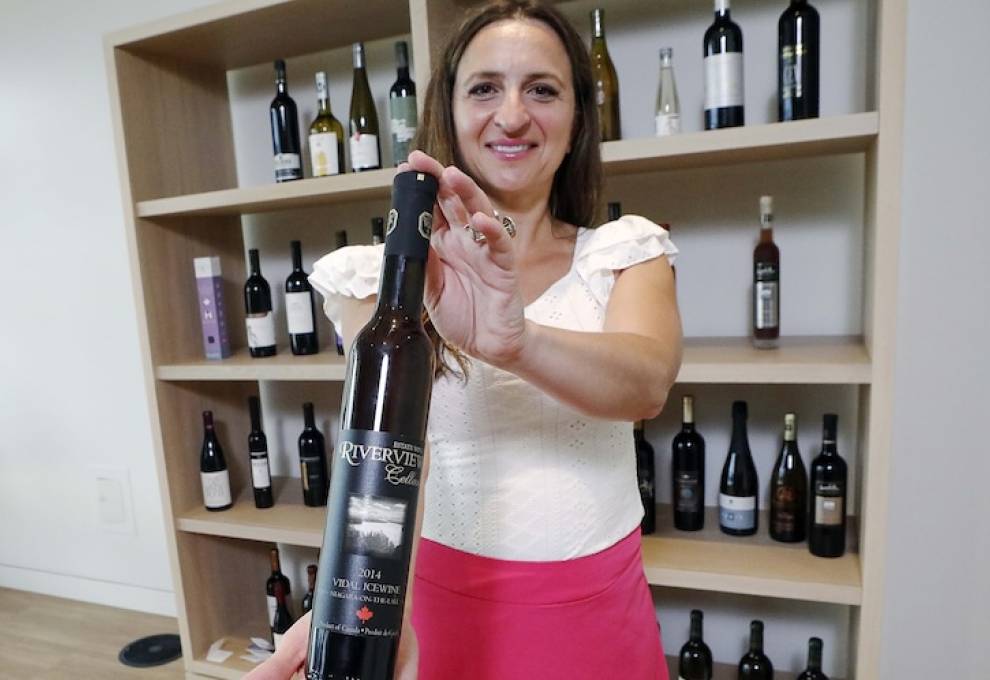
As sales of Ontario wines spike and support of the “Buy Canadian” movement grows, the pressure on wineries to highlight their patriotic ties is greater than ever, say Brock University experts.
Sales of Ontario wines have increased by more than 60 per cent since the Liquor Control Board of Ontario (LCBO) pulled U.S. products from its shelves in March, amid the ongoing trade war.
While providing fewer brand options to consumers has impacted this trend, there are also emotional factors at play, says Brock University professor of marketing and consumer psychology Antonia Mantonakis.
Movements that emphasize identity — such as the “elbows up” campaign that promotes “Canada strong” and creates separation from the U.S. — influence consumer behaviour, says Mantonakis, who is a fellow at Brock’s Cool Climate Oenology and Viticulture Institute (CCOVI).
By bringing identity to the forefront, buyers are motivated to purchase products that relate to their identity, she says.
“That means Canadian consumers are more likely to buy the option that signals it is Canadian, through indicators such as a Canadian winemaker's signature on the bottle,” says the author of Look for the signature: Using personal signatures as extrinsic cues promotes identity-congruent behavior.
“Our research has also shown that people are less likely to buy the option that signals — through something on the label — that it’s not Canadian.”
The growing emphasis on national identity may have a lasting impact on consumer choices, Mantonakis says, with Canadian wines still faring well even if U.S. products return to local shelves.
“Consumers are going to be less likely to choose the California wine, for instance, as long as this identity component remains top of mind for Canadians,” she says.
But how can Canadian wineries ensure that identity stays on consumers’ radars, even after the market once again expands to include U.S. products?
They need to start putting in the work — and the sooner, the better, says Tek Thongpapanl.
The professor of marketing and product innovation, who has extensively studied strategic brand storytelling, particularly in the wine industry, urges Canadian wineries to harness the patriotic momentum sparked by the trade dispute.
Thongpapanl, also a fellow at CCOVI, believes the current trade war will eventually end. That’s why, he says, wineries must seize this unique moment to prepare for the inevitable return of U.S. competitors.
“This is the perfect window to lean into the power of patriotism — to tell your story, to showcase not just the quality of your product, but the Canadian pride and purpose behind it,” he says.
“If you wait two or three years and haven’t used this opportunity to show people why you do what you do, and why it matters to them as Canadians, it might be too late.”
Strategic storytelling, he notes, can take many forms — from creative social media campaigns to content marketing and traditional advertising — but at its heart, it’s about emotional connection.
“In our marketing literature, we talk about moving beyond the transactional consumer, first turning them into loyal customers and ultimately into passionate advocates for your brand,” says Thongpapanl. “The goal is to build trust and emotional attachment so strong that consumers don’t just buy from you, they believe in you.”
He emphasizes that the patriotic feelings ignited by the trade conflict are a powerful emotional lever, but only if wineries nurture them through authentic, consistent messaging.
“You want them to see your brand as a reflection of their Canadian identity,” he says. “At the end of the day, it’s about turning casual buyers into believers — and believers into ambassadors.”
Source: Brock University July 15, 2025 news release

